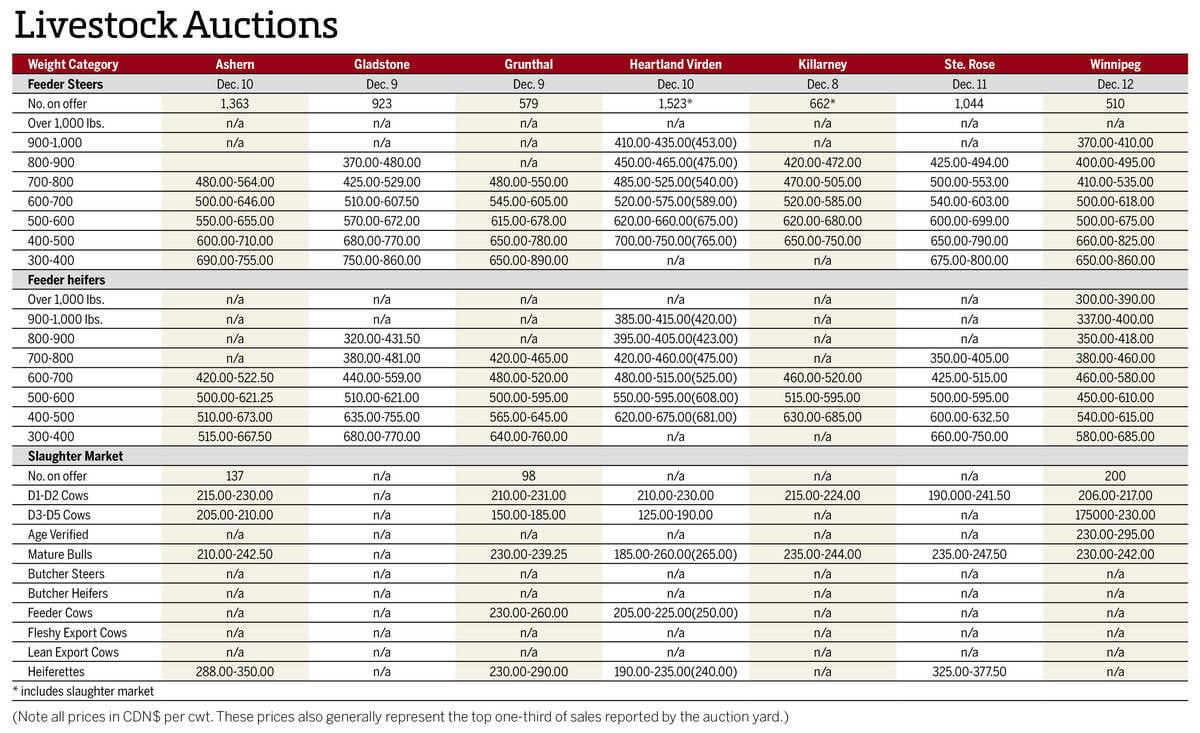Although robust world soybean demand and competitive advantages have allowed the United States to surpass early-season export forecasts for four years in a row, market watchers wonder if this is the year that will break the mould.
The U.S. Department of Agriculture’s weekly soybean export figures have consistently met or exceeded analyst estimates so far.
But when comparing the current data against historical expectations, 2017-18 has a lot to prove.
Cumulative soybean inspections through Nov. 9 are down 12 per cent from last year’s levels and bookings through Nov. 2 are down 15 per cent. But USDA’s forecast is for 2017-18 exports to grow three per cent over last season’s record.
Read Also

Manitoba cattle prices Dec. 16
Here’s what local farmers were getting paid last week for their cattle at Manitoba livestock auction marts; prices covering the week Dec. 8-12, 2025.
Some analysts might argue that a lag from a year ago is to be expected since the 2016-17 marketing year was heavily front loaded due to shortages in top-supplier Brazil.
But hopefully USDA would have factored that in to its 2016-17 forecast by last November, which was 200 million bushels lower than the current projection for 2017-18.
Window shift?
October and November are the two biggest months for U.S. soybean shipments and in recent years, close to 40 per cent of the annual amount sailed during these months.
Average inspections over the last few weeks have been smaller than in the same weeks during both 2015 and 2016.
However, the United States may have shipped more soybeans earlier than normal this year.
In August and September of 2016, some 7.9 million tonnes of beans left U.S. ports – two-thirds larger than the previous record for the period. This spike was attributed to the drought-clipped harvest in Brazil earlier last year.
But August-September 2017 shipments fell only two per cent from last year’s level, and this occurred at the same time that key rival Brazil cranked out record export volumes.
Looking at combined Brazil and U.S. exports for the month of September further demonstrates both how crazy the anomaly was and how unlikely its sustainability would be. The two countries, which supply the majority of the world’s soybeans, shipped a volume 47 per cent larger in November than the previous high.
Although skepticism over lofty export goals is completely valid, soybean demand doubters have simply not emerged as winners the last two years.
The massive September exports might not be a signpost of a permanent demand boost, but the 25 per cent year-on-year rise in actual shipments for the month was much larger than the 12 per cent implied from inspections.
U.S. demand found some unexpected support from Brazil early in 2017, which went against market thinking given that the South American country had just harvested a monster soybean crop.
Strength in Brazil’s currency can limit grower selling there as soybeans are priced in U.S. dollars. Domestic farmers were particularly stingy with their sales earlier this year, especially in the low-price environment.
There is always the possibility of adverse weather during the South American growing season, which is still in its infancy.
And although the trend cannot be relied on forever, USDA initially underestimated Chinese soybean imports by an average of seven per cent over the previous three seasons.















